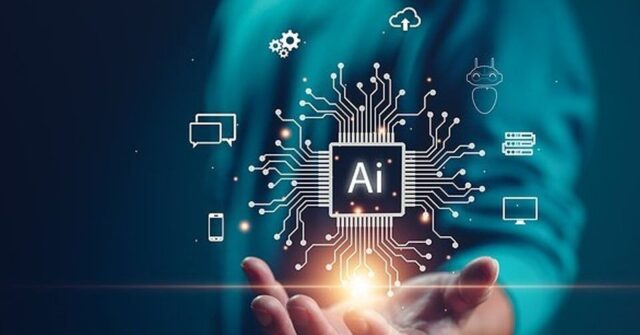The landscape of applications is evolving rapidly. With new technologies emerging, the future of applications promises to be more integrated, intelligent, and innovative. From artificial intelligence (AI) to 5G, applications are on the cusp of a revolution. But what exactly lies ahead? Let’s dive into the key trends and technologies shaping the future of applications.
The Role of Artificial Intelligence in App Development
Artificial Intelligence (AI) is no longer a futuristic concept; it’s a reality. AI is transforming how applications are developed and function, bringing about smarter and more efficient solutions.
AI-Powered Features Transforming Applications
AI-powered features are redefining what applications can do. From personalized recommendations to automated processes, AI is making applications more intuitive and user-friendly. Imagine an app that learns your preferences over time and tailors its functionality accordingly. That’s the power of AI.
Machine Learning’s Impact on User Experience (UX)
Machine Learning, a subset of AI, is enhancing User Experience (UX) by predicting user behavior and optimizing the interface in real time. For instance, e-commerce apps now offer personalized shopping experiences based on past behavior. Machine learning algorithms analyze data and deliver content that resonates with individual users. The result? A more engaging and satisfying user experience.
Cloud-Based Applications: Driving the Digital Transformation
The shift to cloud-based applications is not just a trend; it’s a significant move towards digital transformation. Cloud technology is enabling businesses to scale efficiently while providing robust security and accessibility.
How Cloud Computing is Shaping the Future of Applications
Cloud computing is at the heart of modern application development. It allows applications to be more flexible, scalable, and accessible from anywhere. No longer tied to physical hardware, developers can deploy updates faster, reduce downtime, and provide a seamless experience across devices.
The Rise of SaaS: Future Trends
Software as a Service (SaaS) is gaining momentum as businesses move away from traditional software models. SaaS applications offer the flexibility of cloud-based services with the added benefit of regular updates and maintenance. This model is expected to dominate the future, particularly in industries where continuous innovation is key.
Cross-Platform Development: The New Standard
As the number of devices grows, so does the need for cross-platform applications. These applications work seamlessly across multiple platforms, providing a consistent user experience.
Benefits of Cross-Platform Applications
Cross-platform development reduces time-to-market and costs by enabling a single codebase to run on multiple operating systems. This approach not only ensures consistency across platforms but also simplifies maintenance and updates. For businesses, it means faster deployment and broader reach.
Top Tools for Developing Future-Proof Apps
Tools like React Native, Flutter, and Xamarin are leading the charge in cross-platform development. These frameworks allow developers to write code once and deploy it across multiple platforms, ensuring that applications remain future-proof and adaptable to new devices and operating systems.
Security in Applications: Adapting to New Challenges
As applications become more sophisticated, so do the threats. Security is a critical concern, especially as applications handle more sensitive data.
Data Security Trends for Emerging Applications
Data breaches are a growing threat, making security a top priority for application developers. Encryption, multi-factor authentication, and secure APIs are just a few of the measures being implemented to protect user data. As applications evolve, so too will the methods for safeguarding them against malicious attacks.
How Blockchain Enhances Application Security
Blockchain technology offers a new layer of security for applications. By decentralizing data storage and using cryptographic techniques, blockchain makes it nearly impossible for unauthorized access or tampering. This technology is particularly promising for applications dealing with sensitive information, such as financial or healthcare apps.
User Interface (UI) and User Experience (UX) Innovations
User Interface (UI) and User Experience (UX) are central to the success of any application. As technology advances, so do the possibilities for creating more engaging and intuitive interfaces.
Future UI Design Trends
UI design is moving towards minimalism and efficiency, with a focus on reducing cognitive load and enhancing usability. Future trends may include more voice-activated interfaces, gesture controls, and even brain-computer interfaces, where users can interact with applications through thought alone.
Enhancing UX with Emerging Technologies
Emerging technologies like AI and Augmented Reality (AR) are opening new doors for UX. AI can personalize experiences based on user data, while AR offers immersive experiences that blur the line between the digital and physical worlds. Together, these technologies are set to redefine how users interact with applications.
5G and the Future of Mobile Applications
The rollout of 5G is expected to revolutionize mobile applications by providing faster speeds and more reliable connections. This will open up new possibilities for app developers and users alike.
5G’s Impact on Application Performance
With 5G, applications will be able to handle more data, stream high-quality video, and support complex functionalities with minimal latency. This will be particularly beneficial for applications that require real-time data processing, such as gaming or remote healthcare apps.
How 5G is Enabling Next-Gen Applications
The capabilities of 5G will enable the development of next-generation applications that were previously unimaginable. From real-time augmented reality experiences to fully immersive virtual reality environments, 5G is set to push the boundaries of what applications can achieve.
Augmented Reality (AR) and Virtual Reality (VR)
AR and VR are no longer just for gaming. These technologies are being integrated into a wide range of applications, from retail to healthcare, offering immersive experiences that enhance user engagement.
The Evolution of AR/VR in Applications
AR and VR have come a long way from their gaming origins. Today, they are used in applications to visualize complex data, provide remote assistance, and even train employees in a virtual environment. As hardware becomes more affordable and accessible, we can expect AR and VR to become standard features in many applications.
Future Use Cases for AR and VR in Apps
In the future, AR and VR could be used for everything from virtual shopping experiences to remote surgeries. The possibilities are endless, and as these technologies evolve, so too will the applications that leverage them.
Progressive Web Applications (PWA): The Future of Web Apps
Progressive Web Applications (PWA) combine the best of web and mobile applications, offering a seamless experience across devices. PWAs are gaining popularity for their speed, reliability, and ability to work offline.
Why PWAs are the Next Big Thing
PWAs are lightweight, fast, and can be accessed directly from a web browser without the need for installation. They offer a mobile app-like experience with the benefits of the web, making them an attractive option for businesses looking to reach a wider audience.
Benefits of PWAs Over Native Apps
Unlike native apps, PWAs do not require separate versions for different platforms, reducing development costs and time. They also consume less data and storage, making them more accessible to users with limited resources.
IoT Applications: Connecting the Future
The Internet of Things (IoT) is connecting devices and applications in ways that were once thought impossible. IoT applications are at the forefront of innovation, providing smarter and more interconnected solutions.
How IoT is Revolutionizing Application Development
IoT is enabling the development of applications that can interact with the physical world. From smart homes to connected cars, IoT applications are making everyday tasks more efficient and automated. Developers are now focusing on creating applications that can seamlessly integrate with various IoT devices, offering users a connected experience.
Key Trends in IoT Application Design
As IoT continues to grow, application design will need to adapt to accommodate the increasing number of connected devices. This will involve creating more intuitive interfaces, improving data security, and ensuring that applications can handle the vast amounts of data generated by IoT devices.
Disruptive Technologies Shaping Future Applications
Disruptive technologies like AI, blockchain, and 5G are not just trends; they are reshaping the future of applications. These technologies are enabling new functionalities and creating opportunities for innovation.
The Role of AI in Disrupting Traditional Applications
AI is disrupting traditional applications by automating tasks, providing deeper insights through data analysis, and enabling new user experiences. Applications that fail to incorporate AI may soon find themselves obsolete, as users increasingly demand smarter and more efficient solutions.
How Blockchain and 5G are Driving Innovation
Blockchain and 5G are two technologies driving significant innovation in application development. Blockchain offers enhanced security and transparency, while 5G provides the speed and reliability needed for next-gen applications. Together, they are creating a new landscape for applications that is more secure, fast, and innovative.























